Cost Analysis of Bearded Dragons at PetSmart
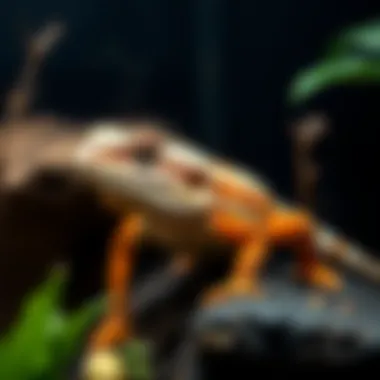
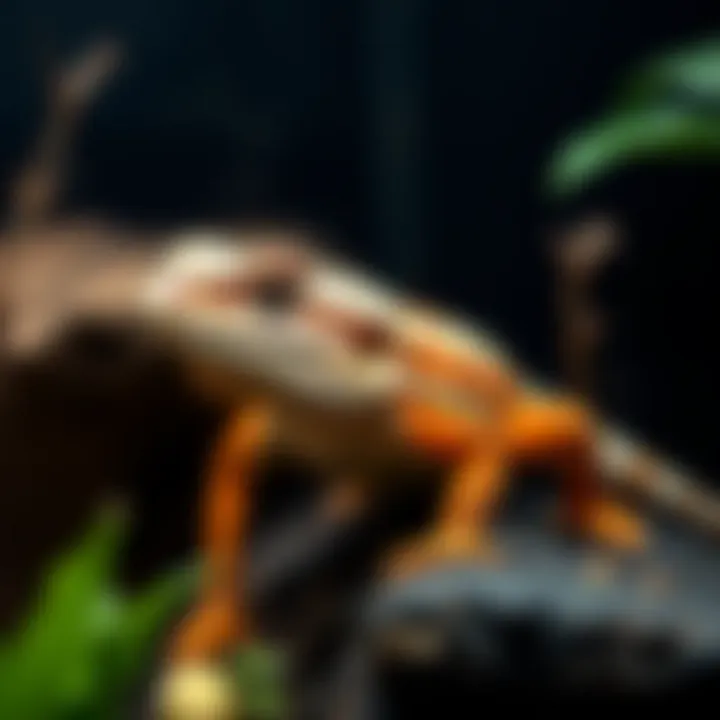
Intro
Buying a bearded dragon can be a delightful yet serious undertaking. Many prospective pet owners venture into this decision, not fully grasping the financial commitment involved. Bearded dragons are more than just pets; they need a habitat that mimics their natural environment, a specific diet, and regular health checks. It's not merely about the initial price tag at the store but encompasses a broader canvas of expenses throughout their lives. With that in mind, understanding all associated costs is essential for anyone looking to bring one of these reptiles into their home.
A bearded dragon may seem like an easy-going creature, yet there are underlying costs that can sneak up on you like a thief in the night. This section will lay out an overview of what to expect, touching upon the primary financial factors such as age, gender, and species, and discussing the ongoing care that these creatures require. By gathering this information, potential buyers will be better equipped to make sound choices.
Pet Care and Grooming
Taking care of a bearded dragon goes beyond just feeding. Regular care is crucial for both their physical appearance and overall wellbeing.
Importance of Regular Care
Regular grooming helps prevent health issues while keeping your dragon’s environment clean and pleasant. A little dash of daily attention can go a long way; it fosters a bond and helps owners to identify any potential health concerns early on.
Grooming Techniques by Pet Type
Different species might require unique grooming techniques. For bearded dragons, baths can be beneficial. It not only hydrates their skin but also aids in shedding. Here's how you generally approach the grooming:
- Bathing: Use warm water suitable for their comfort. Avoid making it too hot or cold. Let them soak for about 15-20 minutes.
- Handling: Get your dragon used to being handled. Start gently and slowly increase the duration.
Tools and Products Recommendations
Typical supplies for keeping your dragon healthy include:
- Humidity Gauge: This monitors the environment.
- UVB Light: Essential for their wellbeing; it mimics natural sunlight.
- Thermometers: To ensure the basking and cool areas are at the right temperatures.
Seasonal Care Tips
As seasons change, so do the needs of your pet. In colder months, special attention may be needed to maintain warmth. Provide extra bedding, check heating lamps, and watch for any signs that your dragon may be uncomfortable. Likewise, during spring and summer, ensure that humidity levels are balanced, as too much moisture can lead to health issues.
Health and Nutrition
A healthy bearded dragon needs a robust diet and routine health check-ups. Understanding their nutritional requirements can significantly affect their lifespan and vitality.
Understanding Pet Nutrition
These reptiles thrive on a mixed diet of insects and greens. Crickets and mealworms are protein sources while leafy vegetables provide the necessary vitamins and minerals. Just like a balanced meal for us, variety is key!
Common Health Issues by Species
Some commonly reported problems include:
- Metabolic Bone Disease: Caused by a lack of calcium.
- Respiratory Issues: Resulting from poor husbandry.
Regular check-ups can catch these issues early.
Preventive Care and Regular Check-Ups
It's advisable to visit a vet who specializes in reptiles. Annual check-ups can help you stay ahead of potential complications.
Food and Dietary Advice
Not only should they eat a variety of food, but it's equally important to dust their meals with calcium powder at least twice a week. Fresh water should always be available, as hydration plays a critical role in their health.
For more insights, you can refer to Bearded Dragon Health
Behavioral Training
Training a bearded dragon can enhance your relationship while also keeping them curious and engaged.
Basics of Positive Reinforcement
Using treats as rewards works wonders. Encourage good behavior by rewarding your pet with a mealworm or a segment of fruit when they do something right.
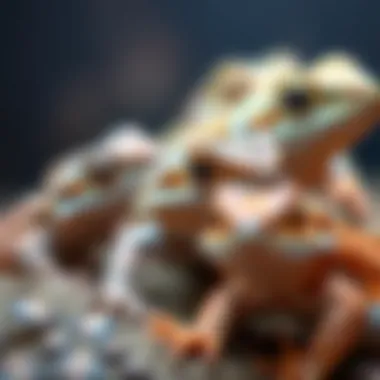
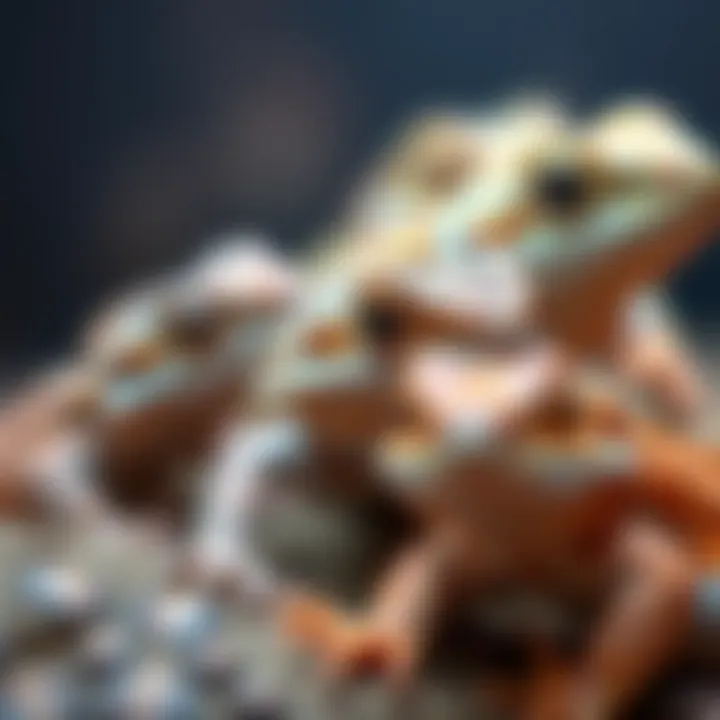
Training Techniques Users Can Apply
- Start easy, teach them to come to you.
- Gradually increase complexity like practicing handling or simple commands.
Managing Behavioral Issues
If you notice any signs of aggression or stress, assess their environment first. It might be overcrowded, or the temperature might be off.
Importance of Socialization
While bearded dragons are typically solitary creatures, letting them interact with you can help them get used to human presence, making handling easier and more enjoyable.
Engaging Activities and Enrichment
Keeping your bearded dragon entertained is crucial for their mental health. Just like people, reptiles need to have fun too!
Fun Games to Play with Your Pet
You can create simple activities that stimulate their hunting instincts by introducing items they can explore and "hunt".
DIY Toys and Activities
Making toys using household items can be rewarding. A simple cardboard box filled with crumpled paper could serve as an adventure cave where they can explore.
Importance of Mental Stimulation
Regular play encourages curiosity and helps prevent common behavioral problems stemming from boredom.
Outdoor Adventures and Exploration
If you're inclined, supervised outdoor time can provide new sights and smells, crucial for their mental health.
Resources and Community Engagement
A wealth of resources can provide ongoing support and knowledge.
Recommended Books and Websites
Books like 'The Bearded Dragon Manual' can be invaluable. Trusted sites like Britannica also offer reliable information.
Forums and Groups for Pet Owners
Online communities, such as Reddit’s reptile section, offer platforms for sharing experiences and advice.
Finding Local Services and Classes
Local veterinary services or reptile-specific pet shops may provide valuable insights into the care and health of your bearded dragon.
Encouraging Community Sharing and Contributions
Encouraging fellow owners to share experiences creates a supportive network, helping everyone learn from one another.
This comprehensive look at the costs involved in owning a bearded dragon at PetSmart paints a clearer picture. With the right preparation and understanding, the journey of pet ownership can be joyful and fulfilling.
Foreword to Bearded Dragons
Bearded dragons have become quite the sensation in the pet world over the past decade or so. Their unique personalities and generally docile nature make them appealing pets for many. Understanding what these reptiles are all about is essential for anyone considering bringing one into their home. Not only do they require specific living conditions and care, but their purchase price can vary based on several factors that potential owners should be aware of. This article aims to equip you with a comprehensive overview that helps you navigate the costs associated with bearded dragons at PetSmart, ensuring that the journey from selection to ownership is well-informed.
Overview of Bearded Dragons
Member of the agamid family, bearded dragons originate from Australia. These reptiles can grow upwards of two feet long and possess a distinctive beard-like collar they puff up when threatened or disturbed. Their color can vary significantly, with hues that range from vibrant yellows to deep browns. What sets them apart from other reptile pets is their exceptional temperament. Most bearded dragons are very social and can even recognize their owners. They enjoy basking in the sunlight and require a warm habitat to thrive. Ignoring their needs can lead to health complications, so potential owners must prepare to provide a proper environment.
Popularity as Pets
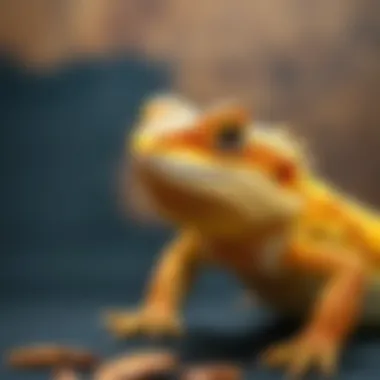
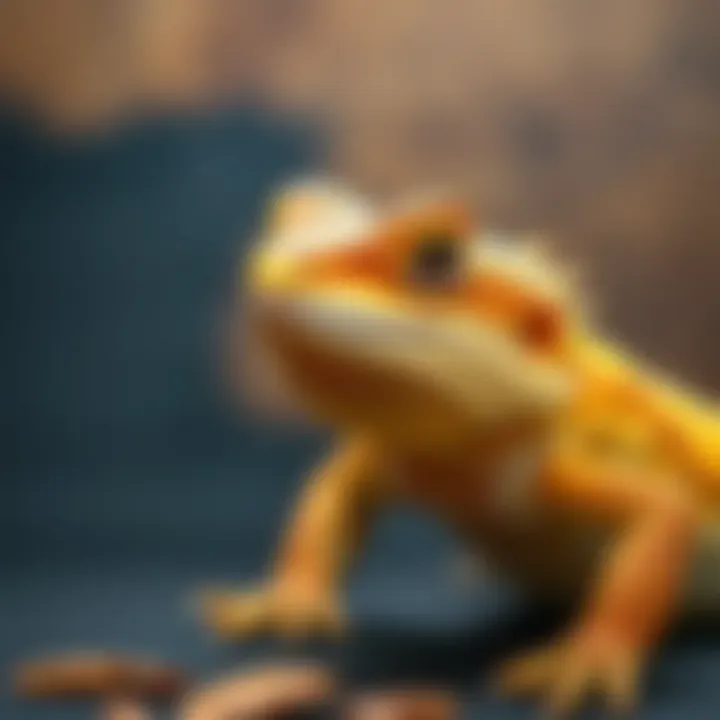
Why do bearded dragons hold such a prominent position in the hearts of many pet enthusiasts? Numerous factors contribute to their rising popularity:
- Sociable Nature: Bearded dragons are generally friendly and curious, making them engaging companions. They don’t just sit in a tank; they interact and can even solicit attention from their owners.
- Low Maintenance: Compared to cats or dogs, their care is fairly straightforward. They don’t require daily walks and are relatively easy to feed.
- Educational Value: For families with children, bearded dragons offer an incredible learning opportunity about reptiles, habitat conservation, and responsibility in animal care.
In a world where pet choices can be overwhelming, bearded dragons stand out as an easily manageable yet fascinating option. Their unique attributes not only enrich the lives of owners but also contribute to the continuing interest in these creatures as viable pets.
Price Factors at PetSmart
Understanding the price factors associated with bearded dragons at PetSmart is crucial for prospective pet owners. Prices can fluctuate significantly based on several considerations that not only inform the initial purchase but also shape the long-term investment in a pet's care. Knowing these factors helps buyers to make educated decisions, ensuring they choose a bearded dragon that aligns with both their budget and their expectations for pet ownership.
Age Considerations
The age of a bearded dragon is a primary influencer of its price. Younger bearded dragons, typically hatchlings or juveniles, can be more affordable yet may come with the need for extra care and specific environmental conditions. These youthful reptiles often require more attention to ensure proper growth and health.
Conversely, adult bearded dragons generally command a higher price tag. They are not just fully grown, but they often come with established temperaments and care history, which can offer peace of mind to potential owners. Additionally, some owners prefer adopting younger dragons to bond with them over time, fostering a stronger connection. Therefore, the decision between a juvenile and an adult can greatly affect costs.
Gender Differences
Many owners may not realize that gender plays a role in pricing at PetSmart. Male bearded dragons are frequently more sought after due to their vibrant colors and larger size, making them a popular choice among pet enthusiasts. This popularity translates to higher prices compared to female bearded dragons, who might have more subdued colors but still represent excellent pets.
Furthermore, if you’re interested in breeding bearded dragons, then acquiring females becomes important. However, the initial cost can deter some from making that choice. It's worth weighing not just the price but also what the buyer ultimately aims to achieve with their pet.
Species Variation
The species of bearded dragons also significantly contributes to their pricing at PetSmart. The commonly available species, like the Pogona vitticeps, are appealing for their adaptability and temperament; thus, they might be priced more moderately. On the other hand, rare species or those with distinctive mutations, like the leatherbacks or morphs, usually carry a hefty price tag due to their rarity and unique traits.
In this context, it's essential for potential buyers to consider what species they are interested in. If someone is particularly drawn to a unique looking dragon, they should be prepared for potentially higher costs, but it might be justified by the distinctiveness and characteristics they bring to the pet ownership experience.
In all, age, gender, and species are key price factors influencing the cost of bearded dragons at PetSmart. By understanding these elements, buyers can better navigate their choices, ensuring they set realistic expectations for both their financial investment and their commitment to care.
Typical Cost Range
Understanding the typical cost range for bearded dragons is crucial for anyone considering bringing one of these fascinating reptiles into their home. The price can vary widely based on several elements, such as where you're purchasing from, the age of the dragon, and even unique traits like coloring. Knowing what to expect in terms of costs can help potential owners budget accordingly and avoid any financial surprises down the line.
Initial Purchase Price
The initial purchase price of a bearded dragon at PetSmart typically ranges from $60 to $120. This price will often depend on the age and species of the dragon. Younger dragons tend to be less expensive, while adults, especially those with rare genetic traits or colorations, might carry a heftier price tag. Additionally, certain species like Pogona vitticeps (the most common bearded dragon) can sometimes be found at a lower price compared to rarer varieties like the Silkback.
When making that first purchase, it’s essential to keep in mind that the sticker shock is just the tip of the iceberg.
- Standard Bearded Dragon: $60 - $75
- Rare Color Morphs: Upwards of $100
Prices at PetSmart sometimes reflect quality as well. The dragons you find in the store are usually well-cared for and come with a level of assurance regarding their health. This can set these pets apart from those found in less reputable environments.
Comparison with Other Retailers
Comparing prices for bearded dragons across different retailers can reveal variations that may influence your decision. While PetSmart's prices are often competitive, places like reptile expos, local breeders, or specialty pet shops might offer a wider range of choices or even better deals.
For example, you might find younger bearded dragons at a breeder's location for as low as $30, but this can lack the health guarantee and support that larger retailers provide. On the flip side, online retailers might also have competitive pricing but could require additional shipping costs, particularly for those living in more remote areas.
When considering your options, think about factors beyond just price:
- Health Assurance: Retail giants often ensure that animals are disease-free.
- Return Policies: Many retailers, including PetSmart, offer policies on returns and exchanges.
- Expert Guidance: Staff at large chains tend to have more robust training in reptile care compared to smaller operations.
Ultimately, weighing not only the purchase price but also these additional factors can assist you in making a thoughtful choice. Keep an eye out for special sales at retailers as well; they often run promotions that can make purchasing your new pet more affordable without skimping on care quality.
"It pays to shop around and compare, but don't let the best price overshadow the care and support you receive in your purchase."
By keeping these considerations front of mind, future bearded dragon owners can better navigate the financial landscape and ensure they are making a solid investment in both their pet and their own peace of mind.
Additional Costs of Ownership
Understanding the additional costs of owning a bearded dragon is crucial for prospective owners. It's not just about the purchase price at PetSmart; there are ongoing expenses that accumulate over time. These costs encompass the habitat, food, and healthcare essentials that ensure a healthy and thriving pet. By familiarizing yourself with these expenses, you can make an educated decision about whether a bearded dragon is a suitable addition to your household.
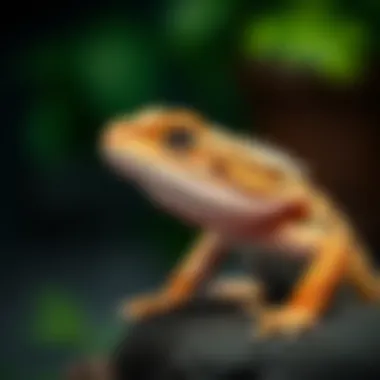
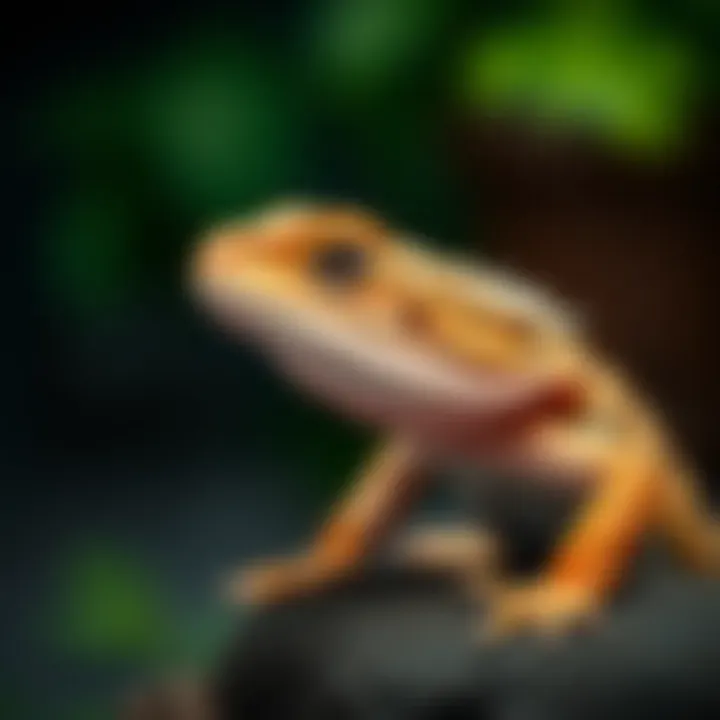
Habitat Setup Expenses
Enclosure
A sturdy and spacious enclosure is foundational for a bearded dragon's well-being. These lizards require ample room to roam; a 40-gallon tank is generally the minimum size recommended for adults. The enclosure needs to be secure and well-ventilated, as bearded dragons can be escape artists. A popular choice is the glass front terrarium due to its visibility and ease of maintenance. However, they can be relatively expensive and heavy. It also traps heat better but requires careful heating management. Be mindful of the initial setup cost, as budget options often compromise on space and ventilation, which could lead to stress for your pet.
Heating and Lighting
Proper heating and lighting are essential in replicating the natural habitat of bearded dragons. They're ectothermic, which means they rely on external heat sources to regulate their body temperature. UVB lighting is a must, aiding in calcium absorption and preventing metabolic bone disease. Bearded dragon owners often opt for a combo heat lamp that emits both heat and light, making it a two-in-one solution. However, these lights need regular replacement and can increase your electric bill if you’re not careful. The challenge lies in ensuring the right temperature gradient in their habitat—a hotspot of about 100°F and a cooler basking area around 80°F.
Decor and Substrate
Decor and substrate are not mere aesthetic choices but also contribute to the enrichment of your dragon's environment. Using a blend of rocks, logs, and safe plants can provide hiding spots and climbing opportunities. A common substrate is reptile carpet, which is easy to clean but might not be as visually appealing as natural substrates like coconut husk. However, natural substrates can pose ingestion risks, necessitating careful monitoring. The right decor can reduce stress and encourage natural behaviors, but costs can accumulate if you keep upgrading your setup.
Food and Nutritional Needs
Type of Diet
A balanced diet is vital for bearded dragons to thrive. They require a variety of insects, vegetables, and occasional fruits. Staple insects like crickets or dubia roaches are common protein sources, while leafy greens such as collard greens and dandelion greens should fill their diet. Significant cost differences exist based on the type of insects you choose. It can get pricy when keeping a diverse diet, especially if you are sourcing high-quality live insects that meet nutritional needs. Notably, a poor diet leads to health issues, so it’s crucial to invest in proper food and nutrition.
Feeding Frequency
Feeding frequency varies with age. Adult bearded dragons generally eat every other day, while hatchlings require daily feeding. This difference can impact your grocery budget. Planning meals ahead and not overspending on food is ideal. Some owners tend to overbuy, leading to waste, so keeping a schedule can help manage costs effectively. Using a calendar can help avoid unnecessary expenditures, ensuring you stay within your financial target.
Cost of Food
The cost of food is another significant expense in bearded dragon ownership. Prices can fluctuate based on the season and availability of certain insects or greens. On average, you might spend around $30 to $50 per month, depending on diet choices and proportions. Relying on a single source for food can be tempting but variation is key for the vibrant health of your dragon. Owners should also account for the potential need to buy supplements like calcium and vitamins to boost their pet's health.
Healthcare Costs
Routine Check-ups
Just like humans, bearded dragons need regular check-ups to ensure they are healthy. These veterinary visits can help catch early signs of illness or stress, potentially saving you money in more extensive treatments later on. Routine exams typically cost between $30 to $75, which can add up over time. It's an investment in your pet's long-term health, preventing expensive treatments that a small problem can escalate into.
Potential Illness Treatments
Even with the best care, illnesses can occur; these can range from simple parasites to more severe conditions. Treatments can vary widely in cost depending on the diagnosis. For instance, a minor issue could cost $50 while more complex health problems might require hundreds of dollars. It's crucial to be financially prepared for these unexpected veterinary expenses to ensure your bearded dragon's health is never compromised due to budget constraints.
Being an informed pet owner is key to managing the ongoing and unexpected costs of owning a bearded dragon. From habitat to health, each decision impacts not just your finances, but also the welfare of your pet.
Long-term Financial Commitment
When contemplating the joys of owning a bearded dragon, one must also take into account the long-term financial implications. A pet, especially one that can live up to 10 to 15 years or even longer, becomes a long-term commitment that requires both emotional investment and financial preparedness. Understanding this commitment is essential for ensuring a stable home for your new scaly friend.
Lifespan Considerations
Bearded dragons are not just pets; they are companions that can be part of the family for many years. Their lifespan is a crucial factor when assessing overall costs. A bearded dragon typically lives anywhere from 10 to 15 years, which can feel like a lifetime when you commit to their care. Expensive vet bills, regular dietary needs, and habitat maintenance become recurring expenses.
- Veterinary Care: Expect to schedule routine check-ups, and vaccinations, if necessary, as part of your long-term planning. This can total hundreds of dollars over the years.
- Dietary Needs: Bearded dragons require a balanced diet rich in variety, from insects to leafy greens. Food costs can add up, especially as you consider their growth and changing dietary needs from juvenile to adult.
- Habitat Maintenance: Over a decade, equipment like heating lamps and UVB lights will need replacing, leading to additional recurring costs.
Ongoing Maintenance Costs
The ownership experience with a bearded dragon also comes with ongoing maintenance costs that can significantly affect your wallet over time. These costs should not be overlooked as they contribute to the overall financial picture.
- Monthly Food Costs: Depending on the age and size of your dragon, monthly food expenses can range from $30 to $120, encompassing crickets, leafy greens, and various supplements. This is an area where variety not only benefits their health but can impact your budget drastically.
- Utility Bills: Heating a habitat correctly is paramount. Expect a bump in your electricity bills due to necessary heating lamps and UVB lights. The average monthly increase can range based on your local rates but it's wise to factor this in.
- Enclosure Maintenance: The habitat itself demands regular cleaning and maintenance. Replacement of substrates, cleaning supplies, and occasionally new decorations can cost around $50 to $100 yearly.
- Vet Visits: As previously mentioned, the occasional vet visit can set you back $50 to $200 each time, depending on whether it’s a routine check-up or treating a potential ailment.
Ending
In wrapping up the cost analysis of owning a bearded dragon purchased from PetSmart, it's pivotal to acknowledge the multifaceted nature of this financial commitment. Owning a reptile, especially one as dynamic and engaging as a bearded dragon, requires careful financial planning beyond the initial sticker price. The various factors influencing costs, including age, gender, and species, underscore the necessity for potential owners to conduct thorough research and consider their long-term budgeting.
Final Thoughts on Ownership Costs
In terms of ownership costs, aspiring bearded dragon parents should reckon with several components that cumulatively influence their budget.
- Initial Purchase Price: Typically, the upfront cost at PetSmart can range significantly based on the factors mentioned above.
- Setup Expenses: A proper habitat is crucial. This often entails purchasing an enclosure, heating and lighting equipment, and decorative elements that could push expenses higher than anticipated.
- Food and Healthcare: Regular dietary requirements and veterinary check-ups add up, hence knowledge about what to expect can mitigate unexpected financial strain.
Owning a bearded dragon should be approached much like any other long-term investment. It affords its owner companionship and aesthetic joy, but only with the understanding of its associated livelihood costs. For the savvy pet owner, being armed with this insight enables better decision-making, allowing for both the well-being of the pet and peace of mind for the owner.
Embarking on this adventure requires the right mindset and a clear grasp of not just the initial costs but ongoing expenses too. Consider delving deeper into communities such as Reddit or educational resources like Wikipedia on Bearded Dragons for further insights from fellow enthusiasts. Engaging with these platforms can provide anecdotes and practical knowledge from seasoned pet owners, making your journey smoother and more fulfilling.















